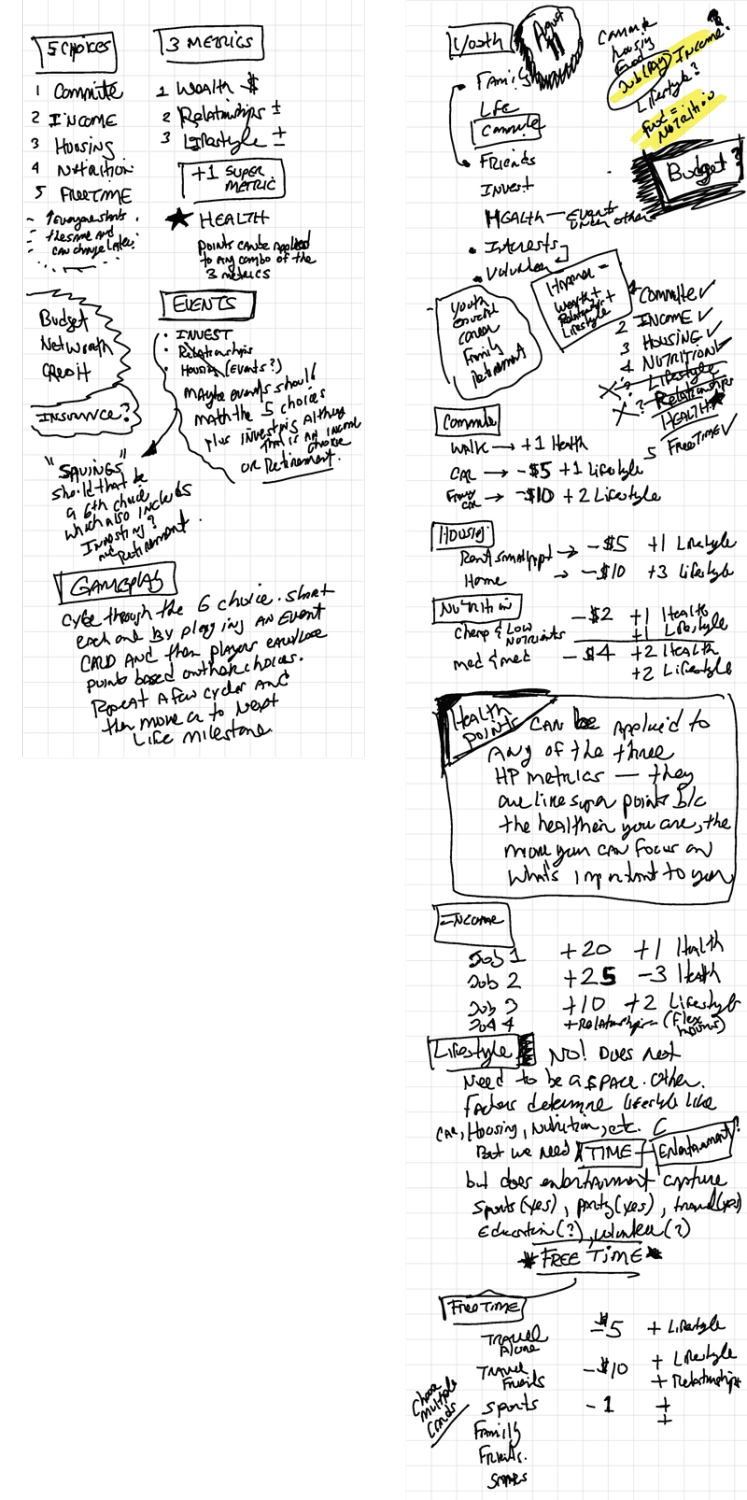
2024-10-1 01:19:28 Author: hackernoon.com(查看原文) 阅读量:10 收藏
Part 1
In Part 1 of this board game design experience, we:
- Defined the target player and customer.
- Identified the concept.
- Set the overall goal of the game to be Happiness, which is made up of three metrics = Financial Wealth + Lifestyle + Friends & Family.
Nothing is finalized yet, but we have enough to move on to the next stage of the design.
Game design is an iterative process where we might make a tentative decision to allow us to move on to the next stage to see how things play out. Then we can reevaluate and adjust as we go.
Part 2 — What will players do?
This stage involves identifying what players will do in the game. To determine this, we must consider what we want players to experience and learn about vis-a-vis personal finance and life.
When I was thinking about this, I considered that different phases in life typically occur sequentially (although not always):
- Youth
- Education
- Career
- Family
- Retirement
And within these 5 phases of life, there are choices we make — all of which are repeated many times. After a few iterations, I landed on these 6 choices:
6 Choices
- Nutrition — how do we maintain our biological needs?
- Housing — where do we live?
- Commuting — how do we get around?
- Income — how do we earn money to live?
- Savings — how do we save or invest our money?
- Free Time — how do we spend our free time?
These are the choices most people have to make in the real world when managing life and money. At least that's what I think — perhaps I'm missing something? Let me know in the comments.

Rules & Time
From a gameplay perspective, having fewer phases and choices is better because it requires fewer rules and may provide shorter gameplay. This makes the game more flexible and versatile.
A lot of board games take 1 or 2 hours to play, which may be ok for entertainment, but for schools, this can be problematic as many classes are less than one hour. A game that requires multiple hours (and classes) to play provides teachers with less flexibility. And, requires us to build a way for an unfinished game to be continued on a different day — this is an inconvenience for everyone, but is easier to do nowadays as everyone has phone cameras that can be used to record the current state of the game.
I don't yet know how long this game will take to play — we are too early in the design process. If we can keep it to less than one hour that will be ideal. It may turn out that a 2-player game will take less than one hour, while a 3 or 4-player game will take longer. This could be a good compromise as a school typically has to have multiple copies of the game to accommodate all students in a class.
Gameplay
The next step will be to determine how all of the 6 Choices can be integrated and repeated in the gameplay. That's not going to be easy because of the rules and time issue I described above, while also trying to make the game somewhat fun (even though education is the objective). I've got some work to do here before I post the next update.
Health
In Part 1, I mentioned that the reason Health is not one of the 3 metrics used to determine Happiness is because Health underlies everything in life.
As I make more progress on the game design, I'm also thinking that Health can be used as a super metric where Health points earned during the game can be applied to any or all of the three Happiness metrics. The premise here is that the healthier we are, the more flexibility we have to devote our time and focus on whichever of the three Happiness metrics we choose.
Other Considerations
I'm still considering using the term "Relationships" to replace "Friends & Family."
Here's why:
- For simplicity, one word is always better than two.
- Relationships can be more encompassing to include colleagues at work and volunteer activities, acquaintances, and more.
- The only problem with the term Relationships is that it is not as self-explanatory as Friends & Family. Although, everything in a game should be defined in the instructions, even if it seems self-explanatory.
Other concepts I want to consider in the gameplay as we go:
- Budget
- Net Worth
- Credit and Credit Score
- Insurance
Am I on track?
Am I missing something?
Do you have any suggestions?
Should I keep posting about this game?
PS: Please only share ideas if you are willing to allow me or anyone following this discussion to use them for free without any obligation. If you contribute an idea that has a significant influence on the design of my game, I will be pleased to gift you a copy of the game.
如有侵权请联系:admin#unsafe.sh